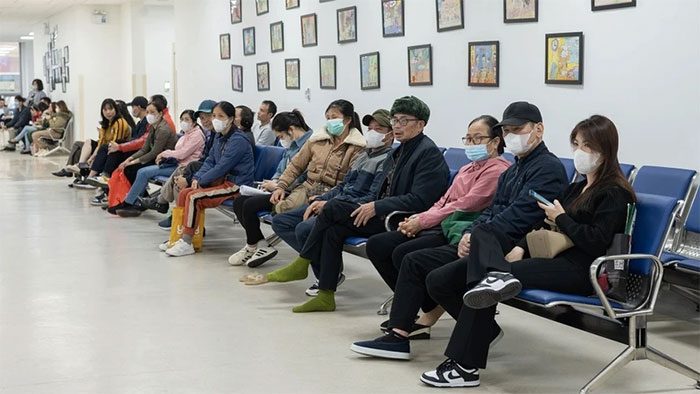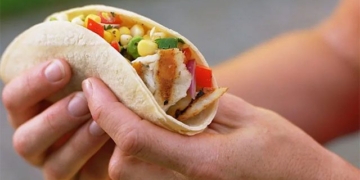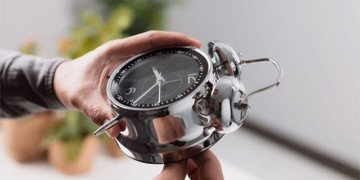Stroke is increasingly on the rise and affecting younger individuals. Notably, there are still many misconceptions about stroke among the public, which results in lost opportunities for timely treatment for patients.
Dr. Pham Van Cuong, from the Interventional Neurology Department at Military Central Hospital 108 in Hanoi, stated that the number of stroke cases is steadily increasing, with a significant portion being young individuals.

Doctor working in the Stroke Department, Military Central Hospital 108. (Photo: Viet Linh).
Stroke is No Longer Just a Disease of the Elderly
“Many people still believe that stroke is a disease that only affects the elderly, specifically those over 60 years old. In reality, the number of young individuals admitted to hospitals for stroke has been increasing, accounting for about 20-30% of cases (under 50 years old). Some patients as young as 12 have been hospitalized due to strokes caused by cerebral vascular malformations,” Dr. Cuong noted.
According to Dr. Cuong, for ischemic stroke, particularly in young individuals, the common causes are abnormalities in cerebral blood vessels and vascular malformations that can rupture, leading to hemorrhagic strokes or blockages resulting in ischemic strokes in patients with progressive cerebrovascular diseases (Moyamoya disease).
The second cause is cardiovascular issues. This was previously less common but is now more prevalent, including arrhythmias or valvular heart diseases that can lead to blood clots in the heart. These clots can travel to the brain, causing blockages and strokes.
“The third alarming cause is bad habits in daily life such as smoking, excessive alcohol consumption, and frequent consumption of fast food… This contributes to early metabolic disorders of blood lipids, hypertension, and obesity,” Dr. Cuong explained.
The fourth, less common cause, may occur in women who use prolonged birth control pills, undergo abortions, or are postpartum… which increases the risk of blood clotting and may lead to cerebral venous thrombosis.

Patients waiting for stroke follow-up at Military Central Hospital 108. (Photo: Viet Linh).
Common Mistakes in Stroke Management
Dr. Cuong also warns that there are many misconceptions about stroke, leading to missed opportunities for timely treatment, with serious consequences, including death.
Mistake 1: Rubbing the body when experiencing stroke symptoms
When a patient experiences a stroke, they often show symptoms such as numbness in the limbs, paralysis of one side of the body, facial drooping, difficulty speaking, dizziness, and headache… These symptoms often lead many to believe the patient has a common cold and attempt to “rub the body” or “scrape the wind.” However, this practice is ineffective in stroke cases and only wastes precious treatment time.
Mistake 2: Pricking fingers to induce bleeding
This is also a common myth when someone experiences a stroke. However, pricking the fingers to induce bleeding does not save the patient; rather, it can worsen their condition. The pain from the prick can raise the patient’s blood pressure.
Mistake 3: Self-medicating with traditional herbal remedies
Individuals with a history of hypertension or strokes often keep expensive herbal medications at home for preventive measures. However, using these medications incorrectly in stroke cases can be ineffective or even harmful to the patient.
Taking medication with the belief that it will cure them can lead to complacency, resulting in delays in seeking hospital care, thus missing the best treatment opportunities.
Mistake 4: Waiting for the patient to stabilize before going to the hospital
In severe stroke cases, where the patient may lose consciousness immediately, family members must take them to the hospital as soon as possible. However, many are afraid that moving them will cause more bleeding and hasten death, leading them to wait until the patient stabilizes. This is a grave mistake that can cost the patient their chance for timely treatment.
Mistake 5: Spreading incorrect beliefs about stroke treatment
Dr. Cuong mentioned two common misconceptions: the belief that certain diets can “drive away” strokes and the idea that practicing specific exercises can treat this condition.
“We have had patients admitted for treatment and prescribed regular medication. However, when they returned home, they were influenced by rumors about practicing new exercises that many people were talking about. After the first week of exercise, feeling better, they stopped taking their medication. Within a week of stopping the medication, they suffered a stroke recurrence,” Dr. Cuong recounted.
Mistake 6: Confusing stroke with other conditions
Minor strokes can have symptoms similar to facial nerve palsy (wind-cold), leading many to seek incorrect treatments. Therefore, when experiencing symptoms like facial drooping, difficulty speaking, or drooling, patients need to seek medical attention urgently for a correct diagnosis.
Mistake 7: Being complacent and waiting to see if symptoms improve
This is a common mistake among those who experience mild strokes, such as dizziness, headaches, or numbness in the limbs, thinking they can just rest and see if they feel better.
Sadly, most cases end up waking in a much worse condition, losing the opportunity for timely treatment.
According to Dr. Cuong, the optimal window for stroke treatment typically ranges from 3 to 6 hours. If patients are taken to the hospital within 3 to 4.5 hours after a stroke, doctors can administer thrombolytic therapy to dissolve the blood clot.
Additionally, another method involves using a device to remove the clot from the affected area, but this intervention is only viable within 6 hours of the stroke.
“If the time exceeds this window, the brain suffers significantly, and no intervention can be performed as mentioned. At that point, the brain may not recover because every minute that passes during a blockage results in the death of approximately 2 million brain cells,” Dr. Cuong emphasized.





















































